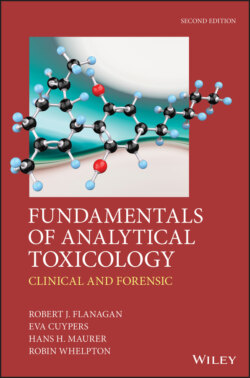Читать книгу Fundamentals of Analytical Toxicology - Robin Whelpton - Страница 63
2.3.9 Vitreous humour
ОглавлениеVitreous humour can sometimes be obtained even if a corpse has been extensively burnt or damaged, if putrefaction is beginning to occur, or if samples such as urine are not available (Arora et al., 2016; Metushi et al., 2016). This specimen may be especially useful when investigating diabetes-related deaths and assessing other parameters such as renal function (Belsey & Flanagan 2016). It can also be valuable for the analysis of alcohols, digoxin, lithium, and some other compounds such as insulin analogues (Ojanperä et al., 2013). Vitreous humour glucose falls rapidly after death and potassium increases even with careful sample collection and such measurements must be interpreted with due caution (Belsey & Flanagan, 2016).
Vitreous humour is essentially a salt solution with very little protein, and thus any poisons or metabolites present can often be extracted as though they were in solution in buffer. Samples should be collected from each eye separately if possible, and sodium fluoride preservative (2 % w/v) added to one sample. Care must be taken during sampling because use of excessive suction can cause a significant change in the concentration of certain analytes and there is always the possibility of post-mortem change (Dinis-Oliviera et al., 2017). The presence of concurrent vitreous disease may also be a factor (Parsons et al., 2003).
